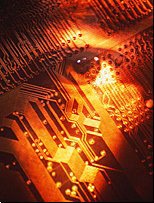ElectriPlast . . .

Move Over
Number 29.
There’s Room for
Both of Us!
By Vince S.
ElectriPlast Blog Editor
ElectriPlast is slated to give this old favorite a run for its money.
It coats the bottoms of cookware, sends water and electricity through our homes, helps computers process faster, speeds communication around the globe, and starts millions of automobiles everyday. What is it? Here's another hint. When mixed with tin, the result is bronze; but add zinc to it and it is called brass. Got it now?
Right! It’s copper.
Copper (Cu) in ancient times
One of the transition elements on the periodic table, copper (atomic number 29 to you science wonks), has been in use since prehistoric times. Archeologists have found evidence that ancient Egyptians, Turks, Chinese, and various Europeans were using copper over 11,000 years ago. Copper weapons have been found dating from about 5000 BC. Egyptian architects built copper plumbing into the great pyramid of Cheops. (A little trivia for your plumber the next time he comes calling!) When Roman legions set out to conquer the world, they obtained most of their copper from mines in Cyprus. In fact, Cuprum (Latin for Cyprus) gave its name to this wonder material. The Colossus of Rhodes, one of the seven wonders of the ancient world, was made of the copper-tin mixture, bronze. Finally, because of its natural beauty, copper was also used to make jewelry, shields, mirrors and ornaments.
In the Middle Ages
Alchemists sought to transmute lead into gold. Up to the 18th century, alchemy was actually considered serious science in Europe. Although they never succeeded in the lead-to-gold conversion, the legacy of alchemy serves as the basis for present-day science. And perhaps the modern equivalent of the alchemists’ centuries old quest is today’s search by materials scientists to solve the issue of a material that can mimic metals.
In the Space Age
After silver, copper is the best metal for conducting electricity. Because it is malleable, it can be shaped into many forms, but copper is also ductile; it can be drawn into extremely thin wire as fine as 0.0001 inches. That’s why copper is a favorite in the defense and space industries. For example, a Triton class nuclear submarine contains 200,000 pounds of copper, mostly in electrical generation and storage systems. Over 10,000 pounds of copper (electrical generation and storage) goes into every NASA Space Shuttle. And lastly, 9,000 pounds of copper (including 120 miles of copper wire) went into each of the nearly 1,500 Jumbo Jets built by Boeing. (That’s a lot of copper since the Wright Brothers first used it in their airplane motor!)
A drum roll, please!
Enter ElectriPlast, a high tech, light weight solution for the aerospace industries’ increasing demand for the non-renewable resource, copper. ElectriPlast is flexible, nearly 40 percent lighter than aluminum, can conduct electricity and heat, and can be molded, cut, or extruded into virtually any shape and form. One such form is wiring that mimics the properties of copper, but at a fraction of the weight and cost.
During a recent interview, Tom Aisenbrey, the inventor of ElectriPlast, and general manager and vice president for product development at Integral Technologies, talked about ElectriPlast’s potential to the aerospace industry. Referring to the amount of copper in the Boeing 747, he said, “What would happen if you cut that weight in half? How much energy savings would you have in something like that alone?” Moreover, he said, "Ours is the world's only highly conductive polymer."
Indeed, Tom. And if you extrapolate those numbers throughout the worldwide aerospace sector…? For a start, lighter weight means less fuel. Hmmm.
Electrical and automotive industries are large users of copper.
Various examples of industries that can use ElectriPlast are antennas, shielding, lighting circuitry, switch actuators, resistors, medical devices, thermal management and cable connector bodies, to name a few. Also the automobile industry puts a whopping 60 pounds of copper in the average vehicle. Then there is the darling of the greenies, hybrids. Because they use electric motors and combustion engines, hybrid cars are estimated to need twice the amount of copper for additional cabling, radiators, air-conditioners, and windings for electric motors. Much of that weight (and cost) can be reduced by ElectriPlast wiring. Less weight, more mileage.
To be sure, ElectriPlast will have a tremendous impact on manufacturing, and many things will change. However, ElectriPlast will not replace copper. For instance, it won’t replace the copper finish on cookware. An ElectriPlast range hood, compared to a copper one, will be a hard sell to homeowners. Similarly, I doubt if John Q. Homeowner will favor ElectriPlast over copper weather vanes. Or ElectriPlast door knob. Finally, the Statue of Liberty consists of over 179,000 pounds of copper plating. But relax, Lady Liberty. We love you just the way you are. Besides, you would be way too cool in a punked out ElectriPlast gown!
But everything else is fair game, so move over copper! There really is room for both of us.








0 Comments:
Post a Comment
<< Home